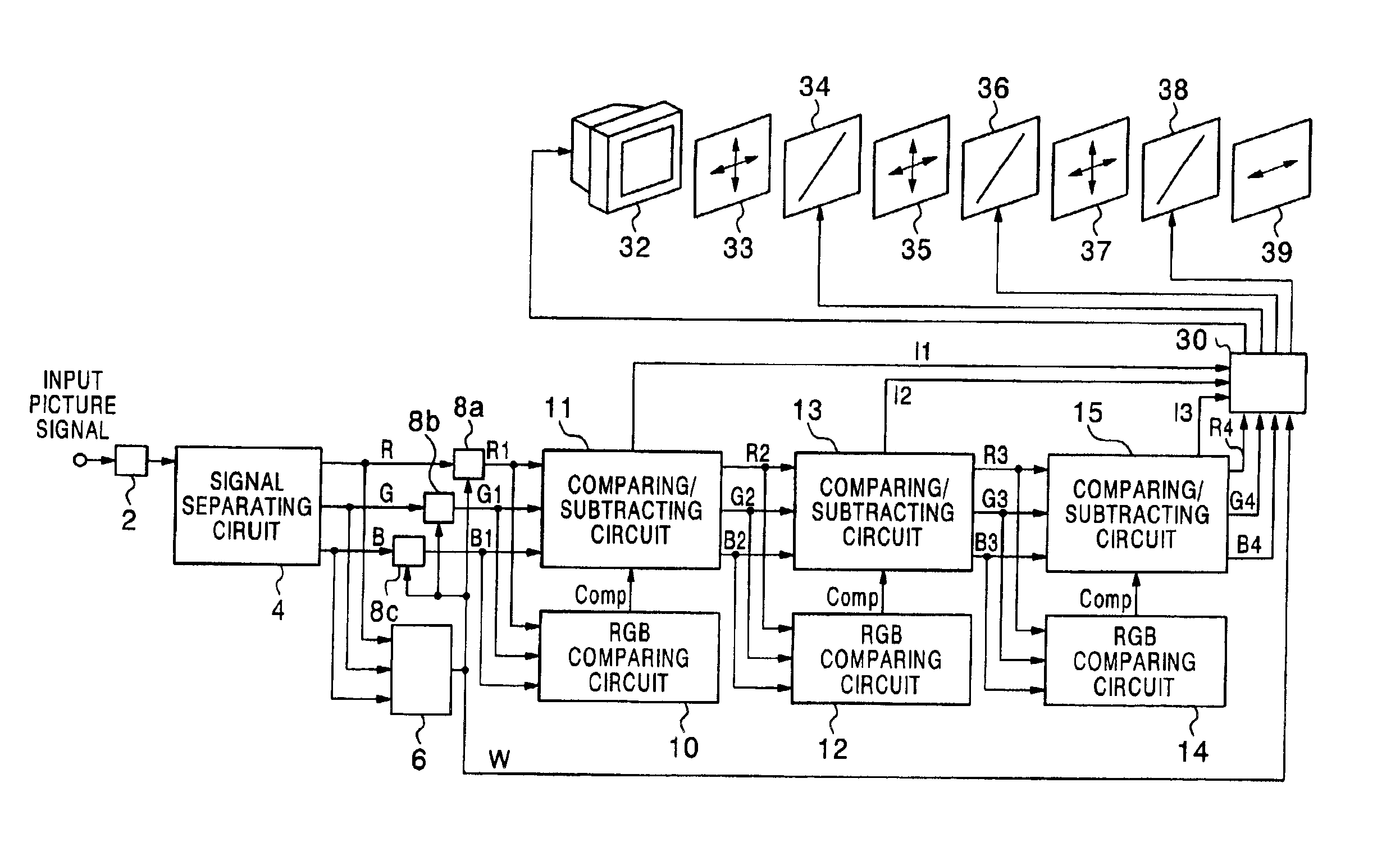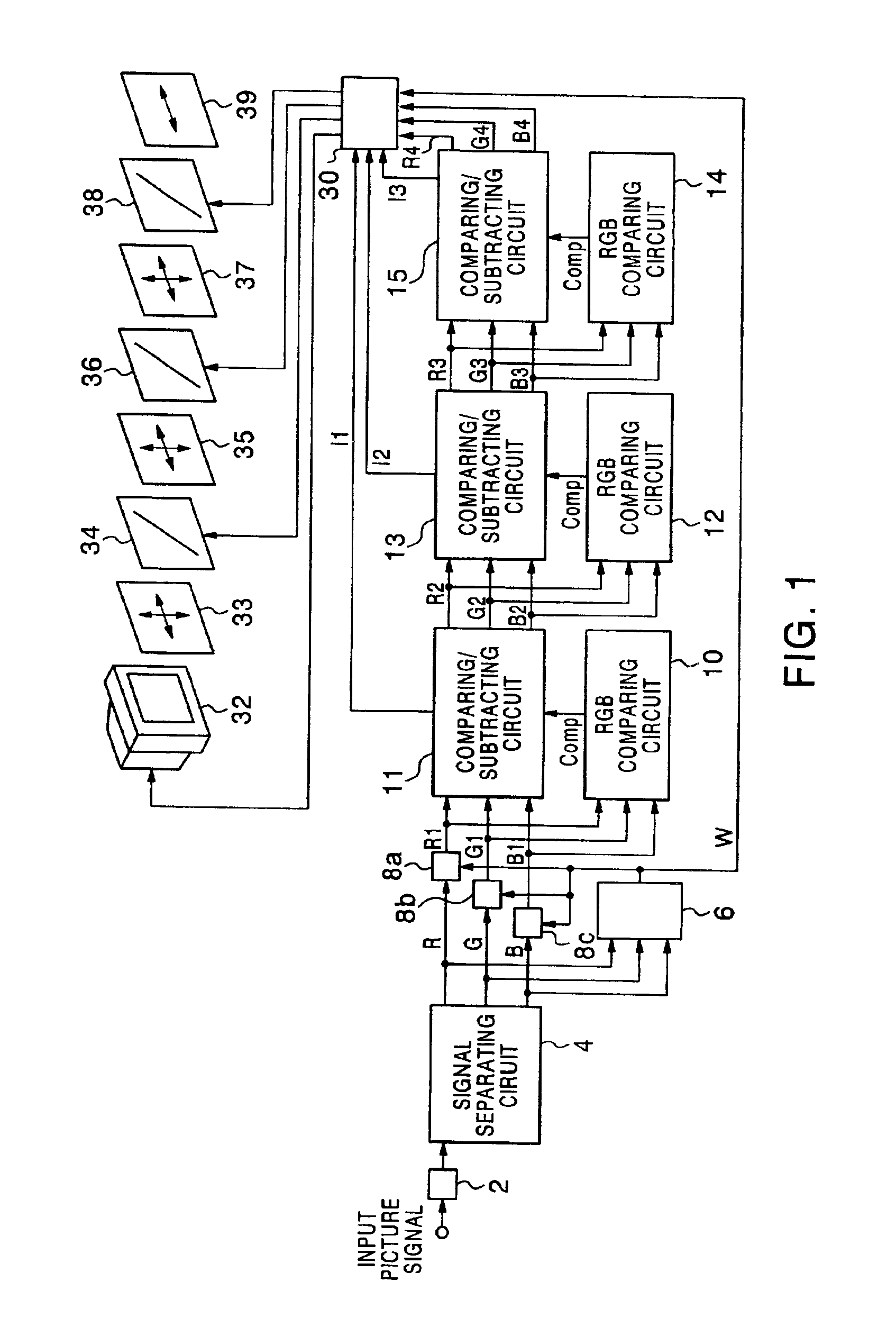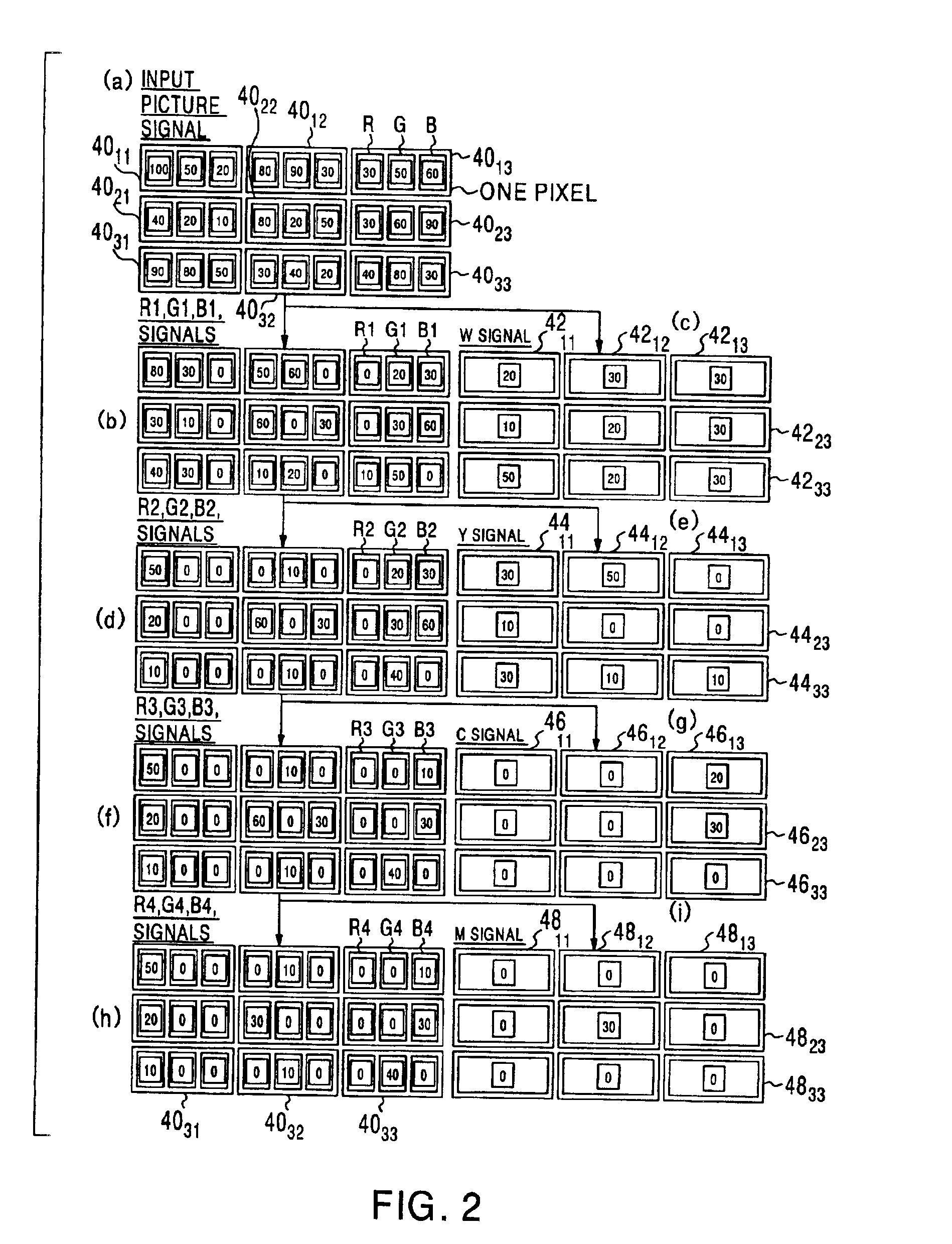Field-sequential color display unit and display method
a color display unit and field-sequential technology, applied in the field of field-sequential color display units and display methods, can solve the problems of reducing limiting the sub-field frequency, and difficult to provide such a circuit, so as to reduce the color breakup of optional images and increase the sub-field frequency
- Summary
- Abstract
- Description
- Claims
- Application Information
AI Technical Summary
Benefits of technology
Problems solved by technology
Method used
Image
Examples
first embodiment
(First Embodiment)
[0066]FIG. 1 shows the construction of a field-sequential color display unit according to the first embodiment of the present invention. The field-sequential color display unit in this embodiment comprises an inverse gamma correction circuit 2, a signal separating circuit 4, an RGB minimum-value detecting circuit 6, subtracting circuits 8a, 8b, 8c, RGB comparing circuits 10, 12, 14, comparing / subtracting circuits 11, 13, 15, a liquid crystal color shutter driving circuit 30 (which will be also hereinafter referred to as an LCCS driving circuit 30), a monochrome CRT 32, chromatic polarizers 33, 35, 37, liquid crystal shutters 34, 36, 38, and an achromatic polarizer 39.
[0067]The construction and operation of the field-sequential color display unit in this embodiment will be described below.
[0068]After an input picture signal is inversely gamma-corrected by the inverse gamma correction circuit 2, it is separated into three-primary color picture signals, i.e., an R sig...
second embodiment
(Second Embodiment)
[0088]FIG. 5 shows the construction of a field-sequential color display unit according to the second embodiment of the present invention. The field-sequential color display unit in this embodiment uses three-primary color signals of R, G and B signals and n non-three-primary color signals for carrying out a field-sequential color display. The field-sequential color display unit comprises an inverse gamma correction circuit 2, a signal separating circuit 4, signal separating circuits 16, 19, signal comparing circuits 17, 20, subtracting circuits 18, 21, an LCCS driving circuit 30, a monochrome CRT 32, chromatic polarizers 33, 35, 37, liquid crystal shutters 34, 36, 38, and an achromatic chromatic polarizing plate 39. In this embodiment, n is 2.
[0089]The construction and operation of the field-sequential color display unit in this embodiment will be described below.
[0090]After an input picture signal is inputted to the inverse gamma correction circuit 2 to be invers...
third embodiment
(Third Embodiment)
[0101]Referring to FIG. 6, a field-sequential color display unit according to the third embodiment of the present invention will be described below.
[0102]The field-sequential color display unit in this embodiment uses R, G, B and W signals and a non-three-primary color signal for carrying out a field-sequential color display, and the construction thereof is shown in FIG. 6. The field-sequential color display unit in this embodiment comprises an inverse gamma correction circuit 2, a signal separating circuit 4, an RGB minimum-value detecting circuit 6, subtracting circuits 8a, 8b, 8c, RGB comparing circuits 10, 12, 14, comparing / subtracting circuits 11, 13, 15, a liquid crystal color shutter driving circuit 30 (which will be also hereinafter referred to as an LCCS driving circuit 30), a monochrome CRT 32, chromatic polarizers 33, 35, 37, liquid crystal shutters 34, 36, 38, and an achromatic polarizer 39. That is, the RGB comparing circuits 12, 14 and the comparing / s...
PUM
| Property | Measurement | Unit |
|---|---|---|
| frequency | aaaaa | aaaaa |
| sub-field frequency | aaaaa | aaaaa |
| sub-field frequency | aaaaa | aaaaa |
Abstract
Description
Claims
Application Information
 Login to View More
Login to View More - R&D
- Intellectual Property
- Life Sciences
- Materials
- Tech Scout
- Unparalleled Data Quality
- Higher Quality Content
- 60% Fewer Hallucinations
Browse by: Latest US Patents, China's latest patents, Technical Efficacy Thesaurus, Application Domain, Technology Topic, Popular Technical Reports.
© 2025 PatSnap. All rights reserved.Legal|Privacy policy|Modern Slavery Act Transparency Statement|Sitemap|About US| Contact US: help@patsnap.com



